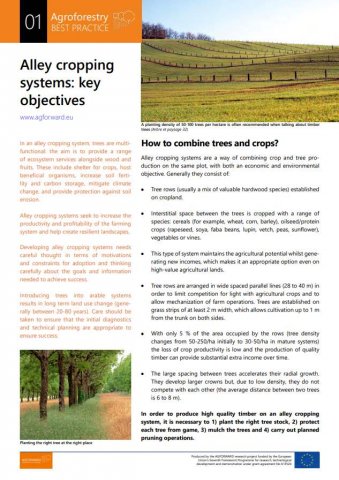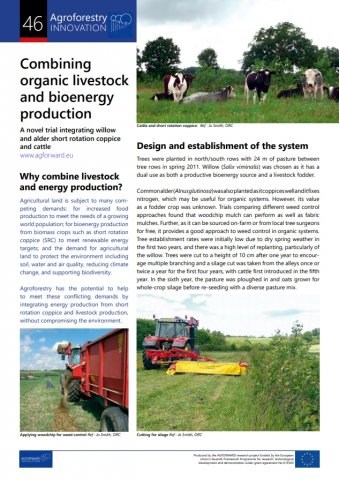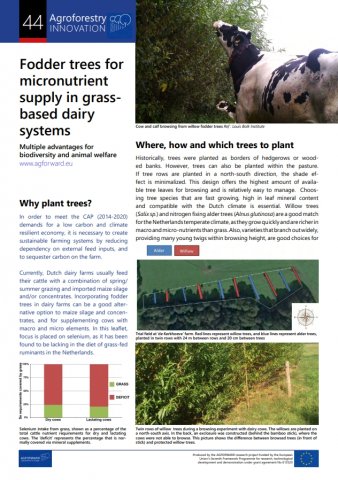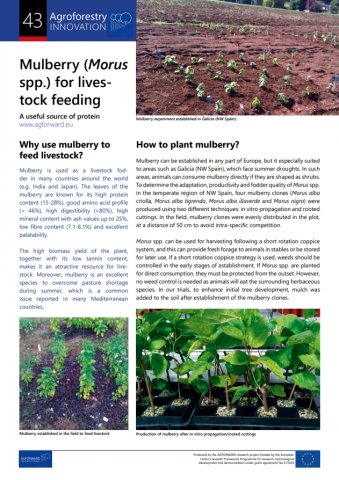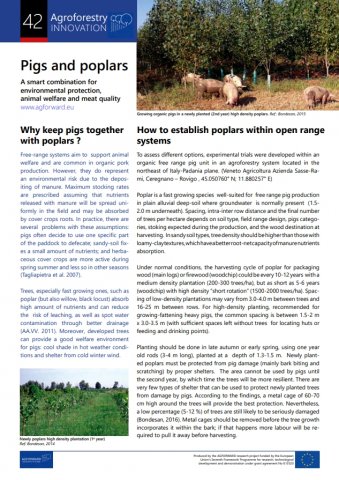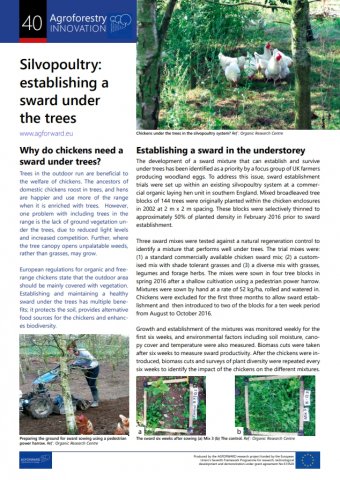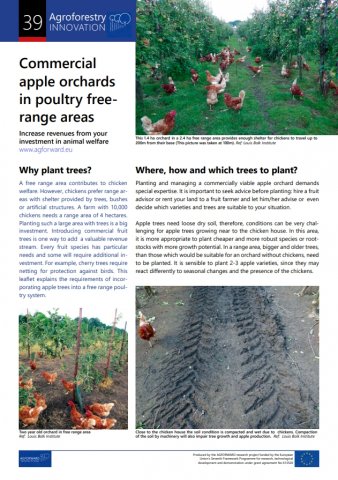In an alley cropping system, trees are multifunctional: the aim is to provide a range of ecosystem services alongside wood and fruits. These include shelter for crops, host beneficial organisms, increase soil fertility and carbon storage, mitigate climate change, and provide protection against soil erosion.
|
This website will soon end. Please update your bookmarks with the new website address |
Factsheets
- AGFORWARD
Why combine livestock and energy production?
Agricultural land is subject to many competing demands: for increased food production to meet the needs of a growing world population; for bioenergy production from biomass crops such as short rotation coppice (SRC) to meet renewable energy targets; and the demand for agricultural land to protect the environment including soil, water and air quality, reducing climate change, and supporting biodiversity.
- AGFORWARD
Why browse woody plants?
To face the challenges arising from decreasing water and fossil fuel resources, dairy systems will have to limit their use of irrigation, mineral nitrogen fertilisers and exogenous concentrates.
- AGFORWARD
Why plant trees?
Currently, Dutch dairy farms usually feed their cattle with a combination of spring/summer grazing and imported maize silage and/or concentrates. Incorporating fodder trees in dairy farms can be a good alternative option to maize silage and concentrates, and for supplementing cows with macro and micro elements. In this leaflet, focus is placed on selenium, as it has been found to be lacking in the diet of grass-fed ruminants in the Netherlands.
- AGFORWARD
Why use mulberry to feed livestock?
Mulberry is used as a livestock fodder in many countries around the world (e.g. India and Japan). The leaves of the mulberry are known for its high protein content (15-28%), good amino acid profile (> 46%), high digestibility (>80%), high mineral content with ash values up to 25%, low fibre content (7.1-8.1%) and excellent palatability.
- AGFORWARD
Why keep pigs together with poplars?
Free-range systems aim to support animal welfare and are common in organic pork production. However, they do represent an environmental risk due to the depositing of manure. Maximum stocking rates are prescribed assuming that nutrients released with manure will be spread uniformly in the field and may be absorbed by cover crops roots. In practice, there are several problems with these assumptions: pigs often decide to use one specific part of the paddock to defecate; sandy-soil fixes a small amount of nutrients; and herbaceous cover crops are more active during spring summer and less so in other seasons (Tagliapietra et al. 2007).
- AGFORWARD
Why introduce trees?
Trees, like poplar and willow, can provide pigs, managed in pasture-based systems, with a natural and stimulus rich environment. Sows and piglets can find shade in hot seasons and shelter in wet and windy weather. Further, the pigs can rub against the trees for skin care.
- AGFORWARD
Why do chickens need a sward under trees?
Trees in the outdoor run are beneficial to the welfare of chickens. The ancestors of domestic chickens roost in trees, and hens are happier and use more of the range when it is enriched with trees. However, one problem with including trees in the range is the lack of ground vegetation under the trees, due to reduced light levels and increased competition. Further, where the tree canopy opens unpalatable weeds, rather than grasses, may grow.
- AGFORWARD
Why plant trees?
A free range area contributes to chicken welfare. However, chickens prefer range areas with shelter provided by trees, bushes or artificial structures. A farm with 10,000 chickens needs a range area of 4 hectares. Planting such a large area with trees is a big investment. Introducing commercial fruit trees is one way to add a valuable revenue stream. Every fruit species has particular needs and some will require additional investment. For example, cherry trees require netting for protection against birds. This leaflet explains the requirements of incorporating apple trees into a free range poultry system.












